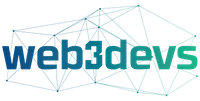This week’s featured collector is makeitrain
makeitrain has a political collection of pro-crypto NFTs. Check it out at lazy.com/makeitrain
Do you think the SEC will approve an NFT ETF?
A clear majority of last week’s respondents—roughly 62 percent—believe the U.S. Securities and Exchange Commission is likely to green-light an NFT-focused exchange-traded fund, while about one-third see approval as improbable; only a small contingent, 8 percent, remain undecided. The results suggest overall optimism in the market that regulatory barriers to mainstream financial products tied to NFTs will eventually fall, though a significant minority still doubts the SEC’s willingness to move forward.
Flamingo DAO: Inside the Vault That’s Shaping NFT History
A recent in-depth profile of Flamingo DAO is a must read for NFT collectors.
Since quietly launching in September 2020, Flamingo DAO has grown from a modest experiment in collaborative capital deployment into one of the most influential collecting entities in the NFT ecosystem. Conceived by veterans of The LAO and supported by Tribute Labs, the DAO set out to explore the still-fringe world of digital art while most of crypto fixated on DeFi. That early conviction proved prescient: the group now safeguards more than 10,000 NFTs, including landmark holdings such as the only complete attribute set of CryptoPunks, a full suite of Autoglyphs, and an Alien Punk often valued on its own in the eight-figure range. Publicly traceable wallets show roughly 23,300 ETH in assets, yet that tally excludes private vaults and several one-of-one pieces, underscoring how difficult it is to pin down an exact figure for a collection designed less for mark-to-market accounting than for long-term cultural preservation.
What distinguishes Flamingo is not merely scale but structure. The DAO’s 70-plus members span founders, technologists, artists, and seasoned investors—names such as Gary Vaynerchuk, Snowfro, Stani Kulechov, and Aaron Wright all contribute to what member-spokesperson Chris Cable calls a “hive-mind” approach. Governance is intentionally lightweight: any participant can deploy up to five ETH unilaterally, while larger outlays pass through rapid-fire emoji voting in Discord. That agility allowed a single member to mint Bored Apes within the discretionary limit—an unplanned acquisition that ultimately became one of the DAO’s most profitable moves. It is a structure that rewards informed intuition while still channeling collective oversight for significant bets.
Those bets tend to coalesce around what Flamingo describes as “networked collections.” Instead of chasing isolated grails, the DAO prefers to assemble deep, coherent sets—hundreds of CryptoPunks and Chromie Squiggles, three-hundred-plus Meebits, large tranches of Terraforms and Ringers—on the theory that dense ownership of culturally important series amplifies their historical narrative and future optionality. One notable exception is Alien Punk #2890, purchased to cement the DAO’s already high conviction in Punks before prices ran away. Even here, the motive was strategic consolidation rather than headline-grabbing speculation.
A second pillar of Flamingo’s thesis is a willingness to arrive early and stay patient. The DAO was commissioning one-of-ones from emerging artists like Joe Pease and Nicolas Sassoon well before the generative-art boom reached mainstream awareness, and it accumulated extensive AI-art holdings through platforms such as Fellowship and Verse while the segment was still discounted relative to its creative potential. Members routinely emphasize that many NFTs in the vault were acquired at modest entry prices; the portfolio’s breadth owes as much to timely curiosity as to spending power. In Cable’s words, the aim is to build a “time capsule of milestone works” that will still resonate when today’s market cycles fade from memory.
That long horizon also shapes the DAO’s outlook in a cooler market. While broader sentiment has softened since 2022, Flamingo views NFTs less as speculative chips and more as the native artifacts of an increasingly digital culture—code, art, and ownership fused into assets that can be preserved indefinitely on-chain. If the parallels to early contemporary art collecting are apt, many pieces may require years to find wide recognition, yet the DAO seems comfortable playing steward until that cultural value crystallizes.
For seasoned collectors, Flamingo’s trajectory offers a useful case study. It demonstrates how coordinated purchasing, clear governance thresholds, and a robust curatorial framework can turn fragmented NFT markets into cohesive collections that matter. It also reminds us that influence need not be loud: by focusing on craftsmanship, provenance, and community rather than floor-price theatrics, the “pink-powered” colony has shaped narratives from behind the scenes.
The full interview with Chris Cable delves deeper into acquisition anecdotes, favorite one-of-ones, and the artists currently energizing the DAO. Collectors interested in how high-conviction capital is rewriting the rules of digital patronage will find it worth the read.
Would you join a collector DAO built like Flamingo?
We ❤️ Feedback
We would love to hear from you as we continue to build out new features for Lazy! Love the site? Have an idea on how we can improve it? Drop us a line at info@lazy.com



